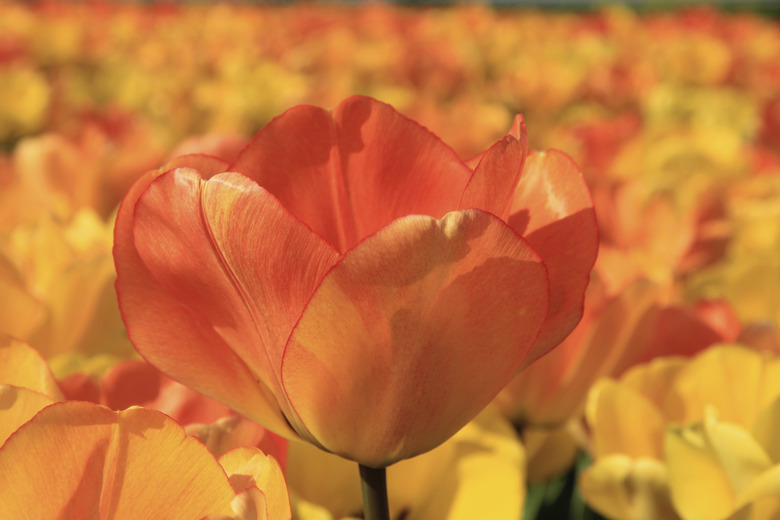How Do Bulbs Reproduce?
Bulb plants, like tulips (Tulipa spp.) and daffodils (Narcissus spp.), are single parents in the bigger sense of the word: They reproduce without romance or pollen exchange. A true bulb represents nature's most impressive magic. It looks as dry as garlic but houses a complete plant embryo, as well as the buds from which baby bulbs can grow.
Sex in the Garden
Pistil, stigma, anther, style and ovary — all are sex organs of a typical garden plant. The pollen from a flower must travel from the anther to the stigma to fertilize the plant and often relies on insects or wind to make the hop. But other plants reproduce only asexually, without a grain of pollen in sight. All true bulb plants fit into this category. With only one parent plant, the genetic makeup of the offspring remains identical to that of the parent plant.
- Bulb plants, like tulips (Tulipa spp.)
- But other plants reproduce only asexually, without a grain of pollen in sight.
True Bulbs
A bulb plant stores its complete life cycle in a structure underground, including the plant embryo and all the nutrients the plant requires to grow. Bulb plants are generally perennials and die back after blossoming to flower again the following year if planted in an appropriate climate. Daffodils and tulips, for example, grow in U.S. Department of Agriculture plant hardiness zones 4 through 8 and 3 through 8, respectively.
Having Baby Buds
Most true bulbs contain five parts: the basal plate that grows the roots, the scales that store the nutrients, the papery tunic that wraps and protects the inner scales, the flower embryo and the lateral buds that allow the plant to reproduce. The lateral buds start small in the base of the mother plant, but grow into offsets that — like college students — need to be transplanted to their own piece of earth to preserve the health and strength of the parent. Buds without tunics, like the "Star Gazer" lily (Lilium "Star Gazer"), which grows in USDA zones 3 through 8, dry out quickly, killing off the bulblets, unless they are kept in moist medium.
Divide and Conquer
A few years after you plant put them in your garden, bulb plants may seem to lose strength and may stop producing flowers. This is a good indication that the bulblets have grown large enough to overcrowd the mother plant. It is an opportunity to expand your garden by digging up the bulbs and dividing off the bulblets. Wait until the flowers fade and the foliage dies back before you begin division. Divide just before fall rains so you don't have to worry about watering the transplants. Dig up the bulb, taking care not to run a shovel through it. Gently wipe off the soil; then break apart the parent and the bulblet. Replant both old and new bulbs quickly in a spot with more room to grow.
- A bulb plant stores its complete life cycle in a structure underground, including the plant embryo and all the nutrients the plant requires to grow.
- Buds without tunics, like the "Star Gazer" lily (Lilium "Star Gazer"), which grows in USDA zones 3 through 8, dry out quickly, killing off the bulblets, unless they are kept in moist medium.
